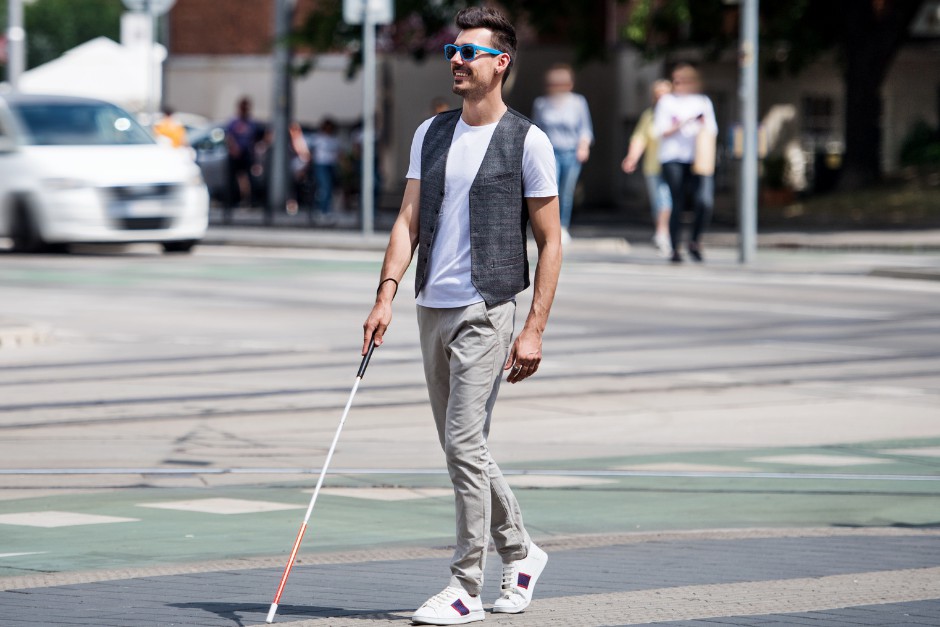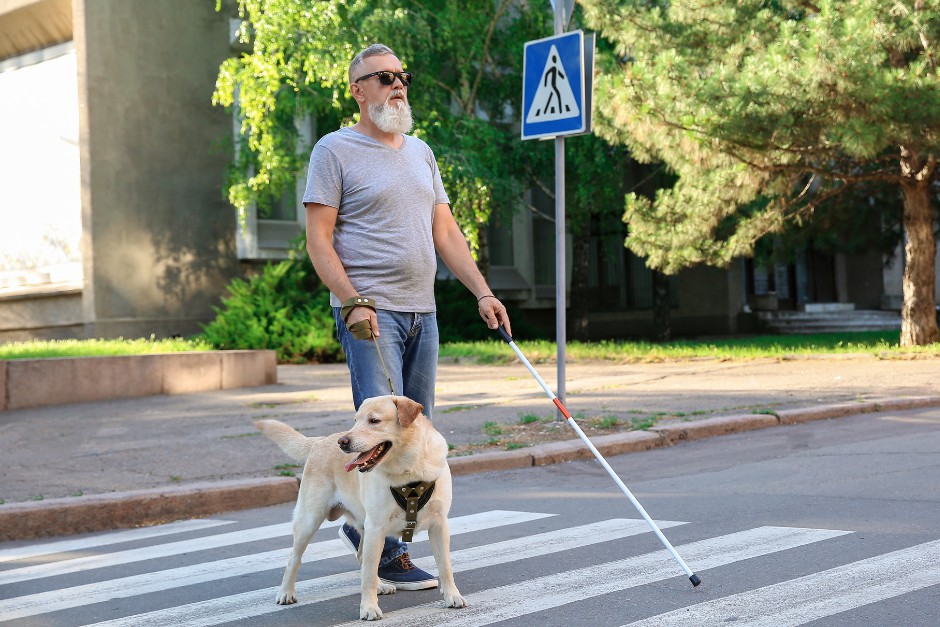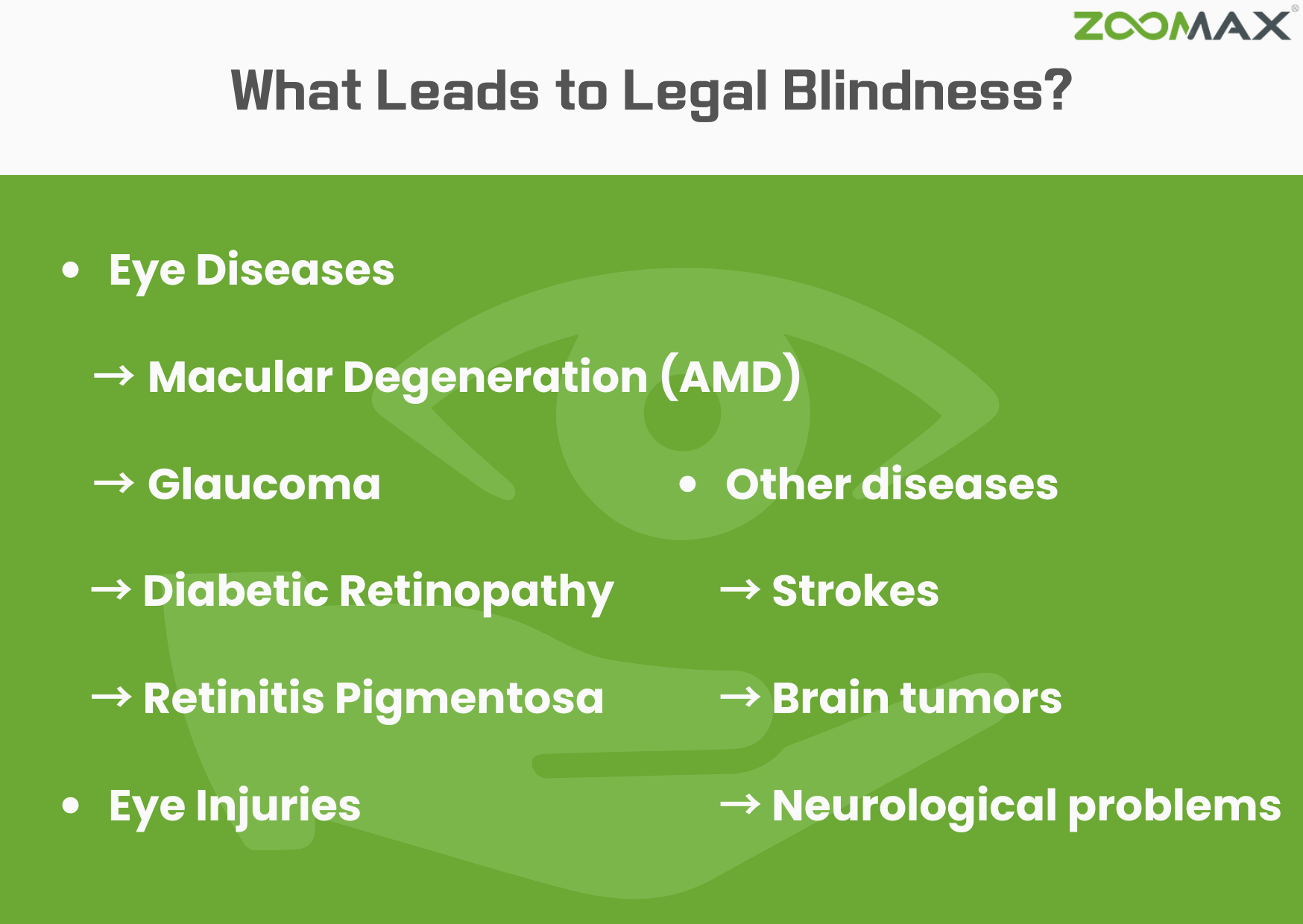Have you ever given thought to what it means to be legally blind? Legal blindness is more than just visual impairment; it is an important legal classification that can have a substantial impact on a person’s life. In this article, we’re going to look at what legal blindness is, what causes it, and how to get help for individuals who are affected.
Consider a world where the scenery blurs and ordinary chores become daunting challenges. For millions of individuals, this is their reality. Legal blindness is not just one ailment, but rather the result of several conditions, including eye disorders, traumas, and other health conditions.
 However, legal blindness does not have to cast a shadow over people’s lives. Social support and innovative technology are critical in assisting visually impaired people to live full lives. Understanding, care, and assistive technology are all critical components of this journey.
However, legal blindness does not have to cast a shadow over people’s lives. Social support and innovative technology are critical in assisting visually impaired people to live full lives. Understanding, care, and assistive technology are all critical components of this journey.
Furthermore, prevention is vital in combating legal blindness. We can lower the prevalence of this problem by identifying risk factors and addressing eye health issues early. Join us as we investigate what legal blindness entails, how it began, and the road to a better future for persons with visual impairments.
About Legal Blindness
The phrase “legal blindness” is not limited to its literal meaning. It is more than just the inability to see well; it is a legal title, a distinction that separates the visually impaired from those with normal vision. To better understand what defines legal blindness, we’ll look at its definition and criteria, as well as how this condition affects daily living.
 Legal blindness is defined as visual acuity in the better eye of 20/200 or less, even with corrective glasses. This means that a person with 20/20 vision can see an object clearly from 200 feet away, but someone legally blind can only sense it from 20 feet away. It’s a significant visual impairment, in sharp contrast to the clarity with which most of us live our lives.
Legal blindness is defined as visual acuity in the better eye of 20/200 or less, even with corrective glasses. This means that a person with 20/20 vision can see an object clearly from 200 feet away, but someone legally blind can only sense it from 20 feet away. It’s a significant visual impairment, in sharp contrast to the clarity with which most of us live our lives.
Legal blindness, on the other hand, is not simply defined by visual acuity. It can also be met if the visual field of the better eye is limited to 20 degrees or less. A person with a severely restricted field of vision encounters particular difficulties in navigating their surroundings. Consider peering through a short tunnel to get a peek of their actual surroundings.
Legal blindness has far-reaching repercussions that influence every element of everyday life. Routine things that many of us take for granted turn into huge achievements. Reading becomes a difficult task as words and characters merge into a sea of incomprehensible symbols. Recognizing people and even crossing the street safely becomes a difficult task filled with potential hazards.
The effects of legal blindness are diverse and might differ from person to person. For some, this means no longer driving and instead relying on others or public transportation. Others may face unemployment or a significant change in their work as a result of their diminished ability.

Legal blindness has an emotional and psychological impact in addition to physical constraints. Isolation, anxiety, and despair can result from not being able to participate with the visual world as others do.
In this world of shadows and restricted vision, a guiding light arises in the form of support systems, technology, and care that assist visually impaired people in leading meaningful lives. The trip into the world of the legally blind is difficult, but it can be filled with optimism and empowerment with the correct understanding and guidance.
What Leads to Legal Blindness?
Key Factors
Several factors can lead to legal blindness. These factors are frequently linked to eye diseases, injuries, or other medical conditions:
- Eye Diseases: Several eye diseases might result in legal blindness. Among them include age-related macular degeneration (AMD), glaucoma, diabetic retinopathy, and retinitis pigmentosa. Each of these disorders affects the eye differently, eventually resulting in visual impairment.
- Eye Injuries: Trauma to the eye can result in permanent vision loss. This might be the consequence of an accident, such as a vehicle accident or a workplace mishap, or it could be the result of another cause, such as sports injuries.
- Other diseases: other diseases such as strokes, brain tumors, or neurological problems, can have an influence on the optic nerves or visual pathways, leading to legal blindness.
Common Eye Diseases that Cause Blindness
- Age-Related Macular Degeneration (AMD): AMD is a degenerative eye disease that damages the macula, which is located in the center of the retina. It is a significant cause of legal blindness, especially among the elderly.
- Glaucoma: this is characterized by increasing intraocular pressure, which can cause optic nerve damage. It can lead to legal blindness if left untreated.
- Diabetic Retinopathy: Diabetics are at risk of developing diabetic retinopathy, which can result in significant visual loss if not appropriately controlled.
- Retinitis Pigmentosa: this is a set of hereditary illnesses that induce retinal degeneration, resulting in severe visual impairment.

Support the Blindness
Receiving assistance from society is critical for those who are legally blind. Family, friends, and support groups may all play an important part in assisting individuals in adjusting to their condition. Coping tactics such as cultivating a positive mentality, learning new skills, and setting realistic objectives are critical for preserving independence and emotional well-being.
How to Support Those with Legal Blindness
Supporting people who are legally blind involves recognizing their specific needs and offering support accordingly. Among the most important aspects are:
 Assistive Technology: For those who are blind or visually challenged, the use of assistive technology is critical. Examples of such devices are electronic video magnifiers. These technologies can assist you with reading, writing, and navigating your surroundings. Assistive technology plays a critical role in the lives of those with legal blindness. Devices like Zoomax’s Snow 12, Luna 6, and other models have proven to be invaluable tools for enhancing the quality of life for individuals living with severe vision impairment. These devices offer solutions for reading, magnification, and mobility, allowing visually impaired individuals to regain independence and participate actively in society.
Assistive Technology: For those who are blind or visually challenged, the use of assistive technology is critical. Examples of such devices are electronic video magnifiers. These technologies can assist you with reading, writing, and navigating your surroundings. Assistive technology plays a critical role in the lives of those with legal blindness. Devices like Zoomax’s Snow 12, Luna 6, and other models have proven to be invaluable tools for enhancing the quality of life for individuals living with severe vision impairment. These devices offer solutions for reading, magnification, and mobility, allowing visually impaired individuals to regain independence and participate actively in society.- Vision Rehabilitation Services: These services provide instruction to improve daily living skills, orientation and mobility, and the appropriate use of assistive technology.
- Accessibility: Ensuring that persons with visual impairment have access to public areas, websites, and documents is critical for their involvement in all sectors of society.
While dealing with legal blindness is critical, prevention is also essential. Regular eye tests, particularly for people at risk of eye diseases, can help detect and treat conditions before they cause severe vision loss.
 Legal blindness is a complicated illness with far-reaching consequences for people who suffer from it. Understanding why it happens, the relevance of support networks, and the role of assistive technology in improving the lives of people with severe vision impairment is critical. By raising awareness and taking a comprehensive approach to assisting the visually impaired, we can improve their quality of life and try to enhance independent living for those with legal blindness.
Legal blindness is a complicated illness with far-reaching consequences for people who suffer from it. Understanding why it happens, the relevance of support networks, and the role of assistive technology in improving the lives of people with severe vision impairment is critical. By raising awareness and taking a comprehensive approach to assisting the visually impaired, we can improve their quality of life and try to enhance independent living for those with legal blindness.
References
https://www.brightfocus.org/macular/article/eye-diseases-can-cause-legal-blindness
https://www.webmd.com/eye-health/legally-blind-meaning
https://www.verywellhealth.com/what-does-it-mean-to-be-legally-blind-3421928
Legal Blindness

